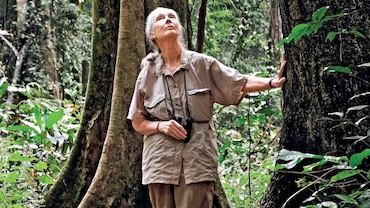- HOME
- /
- Conversations
- /
- In My Opinion
- /
Will the Spirit of Alma-Ata Come Alive in Astana?
Comprehensive primary health care could potentially emerge centre stage at a WHO conclave in the Kazakh capital this month.
 Investing in comprehensive primary health care is the need of the hour. Photo: Indiapicture.
Investing in comprehensive primary health care is the need of the hour. Photo: Indiapicture.
“Health for all by 2000” was an inspiring slogan that rang out of the Alma-Ata Declaration that the world adopted in 1978 under the auspices of the World Health Organization (WHO). Much has changed since then, with Kazakhstan emerging as an independent country from the break up of the Soviet Union and changing the name of the erstwhile capital Alma-Ata to Almaty. The country has even had a new capital in Astana since 1997. The distance between Almaty and Astana, both in Kazakhstan, is 1,200 kilometres. The world has taken 40 years to make this journey, which still seems a start and not an end.
More important, the resonance and relevance of the declaration have altered in the changed context of global health. The design of comprehensive health care, which emerged at Alma-Ata, was abandoned in the decades that followed, only to be revived again in recent years. The cynicism, with which critics dismissed “health for all” as an empty slogan, has given way to new understanding and fresh commitment, as the United Nations (UN) in 2015 articulated as a Sustainable Development Goal (SDG) to be attained by 2030: “Ensure healthy lives and promote well-being for all at all ages”.
Between these years, the idea of comprehensive primary health care was distorted and discarded, as ‘selective primary health care’ was pushed by international donors and practised by aid-dependant low- and middle-income countries. Many vertical disease-control programmes were designed for delivery through a splintered primary health-care system. Even the Millennium Development Goals (MDG), adopted in 2000 by the UN, directed action towards specified health issues (maternal health and child mortality) and major infectious diseases (HIV-AIDS, tuberculosis and malaria). The health system was functionally segmented by age and fragmented by disease. This led to the exclusion of many age groups (such as adolescents, middle-aged and elderly persons) as well as major non-infectious causes of disease, death and disability (cardiovascular, respiratory and kidney diseases, cancers, diabetes, mental illness, and injuries).
While these vertical program-mes did achieve some success by mobilizing and channelling resources towards specific targets, it soon became apparent that they cannot be force-fitted into a weak health system. Not only did the delivery of these programmes suffer because of challenges in health workforce and coordination but they also extracted a huge opportunity cost through the neglect of other health conditions that should be addressed by health services.
The interest in competent and comprehensive primary health care resurfaced with the growing global commitment to universal health coverage (UHC). The provision of appropriate health care to all, with adequate financial protection, is now an identified SDG target. It has become the new flagship programme of the WHO, which advocates that comprehensive primary health care must lead the journey to UHC.
This renewed call for strengthening primary health care, as an integrative platform that addresses a broad range of health needs in a population and provides continuity of care, will be made by WHO member countries at Astana in October 2018, rekindling the spirit of the Alma-Ata Declaration. Wherever such a model of primary health care has been adopted, universal health coverage has been easier to achieve, since the whole population benefits from a broad range of services that addresses most health needs at low cost.
The need for costly advanced health care, delivered through hospital admissions, is greatly reduced by efficient and easily accessible primary health care that assures health promotion, disease prevention, early detection and cost-effective management of health threats. Primary health care also serves as a gatekeeper for making not only critical but timely referrals for more advanced care and provides long-term care for persons returning from higher levels of care. Communities too are comforted by care that is delivered at home or close to home. Well-organized primary health care also provides the best defence against the spread of epidemics and enables effective disaster preparedness and response.
Primary health care need not be mostly doctor-dependant. Both rural and urban primary health care can greatly benefit from several services delivered through technology-enabled, non-physician health-care providers, including community health workers, nurses (especially nurse practitioners) and a range of other skilled allied health professionals. Many affordable technologies are emerging that can greatly enhance the outreach and effectiveness of such services, but their success depends on the availability of a multiskilled primary health-care team. The engagement of communities is vital to the success of primary health care, for setting priorities, partnering in delivery and monitoring the quality of services. This enables democratization of health care.
If the world has learnt its lessons in the 40 years after Alma-Ata, primary health care will emerge from Astana as the heart of a caring and compe-tent health system and the soul of universal health coverage. It will also drive us towards the SDG targets of 2030 with assured purpose and performance. Back to the future!
Dr K. Srinath Reddy is president, Public Health Foundation of India. He was awarded the Padma Bhushan in 2005.
The views expressed are personal.






